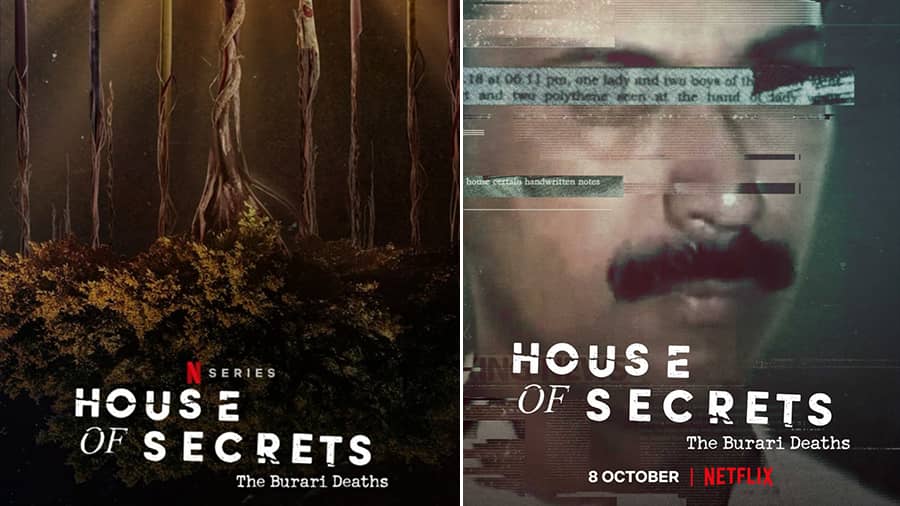Netflix has been stepping up the game with every true crime documentary it’s producing in the Indian context. House of Secrets: The Burari Deaths (released on October 8, 2021) follows the successful formula of Indian Predators and Crime Stories: Indian Detectives but is also Netflix’s most ambitious and challenging Indian docuseries yet.
In 2018, 11 members of the Chundawat family were found dead in their house in Sant Nagar, Burari, Delhi, with their eyes blindfolded. This gruesome incident forms the premise of the three-episode docuseries House of Secrets: The Burari Deaths, directed by Leena Yadav. Here’s what makes it a spine-chilling but compelling watch for crime aficionados.
A sensational thriller that plays out like a movie
Leena Yadav, who has previously directed feature films such as Shabd (2005), Parched (2015) and Rajma Chawal (2018), uses only information available in the public domain to construct the script. Much like a movie, the narrative begins by discussing the many conspiracy theories that were abuzz at the time regarding the case and concludes by revealing the reality.
House of Secrets: The Burari Deaths is also aided by a sombre background score by A.R. Rahman, which captures the severity of the incident and also sheds light on the toll it took on all those who were involved in unraveling the truth.
How to define the incident?
The death of 11 members of a family — all at once — surely has to be a result of a crime, right? Before the case was closed, the widely publicised deaths were labelled murders, leaving a trail of unanswered questions.
But were they actually murders or mass suicide or an accident during a ritual? This question troubled not just the investigators but also journalists who were covering the incident. News channels tried out different tricks to get to the bottom of the story, which included interrogating the family’s pet dog, inventing esoteric conspiracy theories of occult and even accusing the local plumber for drilling 11 pipe holes at the back of the house.
The three-part docuseries effectively portrays the frenzied media coverage through news clippings and interviews with journalists covering the case. It also examines how the media circus impacted those who were close to the deceased family.
A social autopsy
As the documentary series nears its midpoint, all evidence points to the family’s youngest son, Lalit, as the mastermind of the “mass suicide”. He created a mini-cult within the family for more than 10 years, influencing everyone to believe he can connect to their late father. It appears that Lalit was the likely architect of a ritual gone dreadfully wrong.
Although there’s no attempt to come to a conclusion on whether it was a mass suuicide or murders, the docu series explores the ‘why’ behind the incident in great detail, performing what journalist Barkha Dutt calls in her interview in the series a “social autopsy”.
A range of perspectives have been put together with the assistance of law enforcement officers, reporters, medical professionals involved in the case, along with friends, relatives and neighbours of the Chundawat family.
Spotlight on mental health
Considering the psychological condition of persons committing a crime is increasingly becoming a focus point of true crime series. House of Secrets: The Burari Deaths throws light on the lack of awareness about mental health even in well-to-do families living in metro cities.
Investigations show that Lalit was not an occultist but was suffering from severe mental wounds sustained from acute head injuries in a motorbike accident and the trauma of his father’s death. Leena explores issues such as collective psychosis and blind trust in superstitions that take a toll on mental health.
The docuseries serves as a constant reminder that while the incident may seem extraordinary, people who lost their lives were just like us — appearing normal on the outside but struggling with their emotions.










